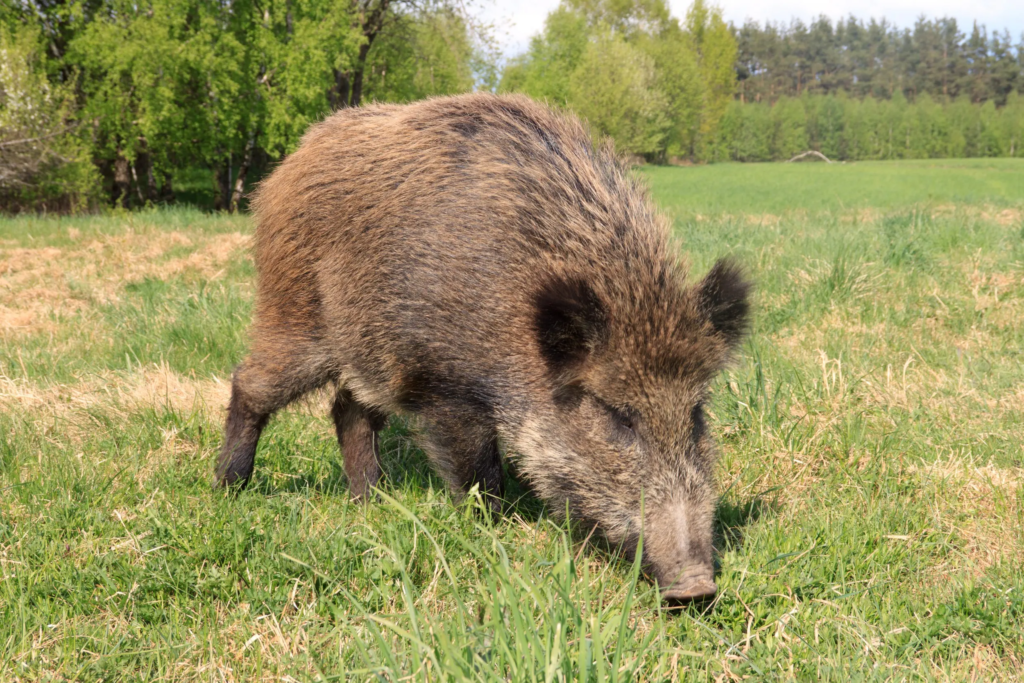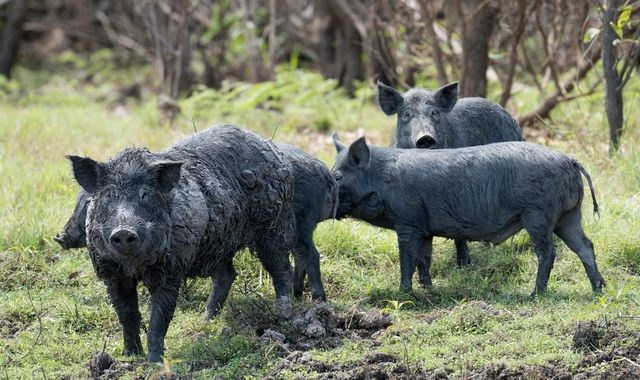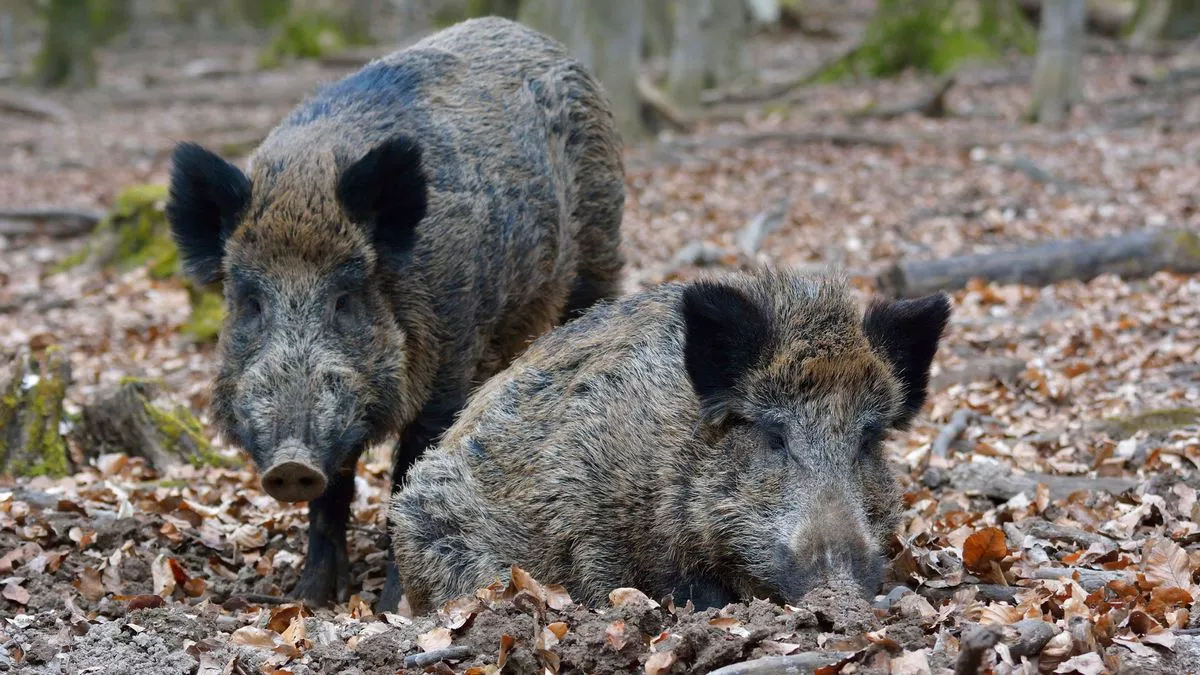The Cairngorms National Park, a stunning expanse of wilderness in Scotland, has recently become the site of an alarming incident involving the Pigs Illegally Released into Cairngorms.
This event follows closely on the heels of another controversy—the unauthorized release of four lynx into the park in January. Authorities and conservationists are now grappling with the consequences of these reckless actions, which not only endanger the animals involved but also pose significant risks to the local ecosystem and community.
Pigs Illegally Released into Cairngorms National Park
On Monday, officials at the Cairngorms National Park Authority reported the presence of up to 20 feral pigs near Uath Lochans, a scenic area within the park.
Unlike truly wild boars, these animals appeared to be relatively domesticated, leading experts to believe that they were illegally abandoned rather than having naturally strayed into the area. The Park Authority, in collaboration with Forestry and Land Scotland (FLS) and NatureScot, quickly mobilized efforts to capture the pigs.
The motivations behind this illegal release remain unknown. However, authorities suspect it could be linked to individuals who advocate for rewilding efforts or those who simply abandoned the pigs for convenience.
Read : Lynx Released Illegally into Highland Wildlife Park Died Overnight
Unlike traditional rewilding initiatives that involve careful planning and scientific oversight, these unauthorized releases create chaos and undermine conservation efforts. The authorities strongly condemned this act, highlighting the risks posed to the environment, native species, and local farmers.
Read : Lapland Magic: A Winter Wonderland in Northern Finland
Scottish Land and Estates (SLE), an organization representing rural businesses, was quick to denounce the incident. Ross Ewing, director of moorland at SLE, called the release “reckless” and stressed the potential consequences for both animal welfare and the surrounding environment. He urged anyone with information to contact Police Scotland, emphasizing the need for accountability in such matters.
Ecological and Agricultural Concerns
The presence of feral pigs in a protected national park raises significant ecological and agricultural concerns. Unlike native wildlife, feral pigs can cause considerable damage to the landscape by uprooting vegetation, disturbing fragile habitats, and competing with local species for food.
Their foraging behavior can accelerate soil erosion, disrupt water sources, and contribute to the spread of invasive plant species.
In addition to environmental damage, the pigs pose a direct threat to local farmers. Feral pigs are notorious for destroying crops, preying on small livestock, and spreading diseases such as swine fever and bovine tuberculosis. Given their high reproductive rate, even a small population can rapidly expand, making eradication efforts increasingly challenging.

The situation in the Cairngorms is particularly concerning because the area is home to a delicate balance of wildlife, including red deer, capercaillies, and various bird species that depend on undisturbed habitats. An unchecked population of feral pigs could disrupt this balance, leading to long-term ecological consequences.
Authorities have responded by setting traps in an effort to remove the pigs before they establish a permanent presence in the park. However, the success of these efforts depends on swift action, as feral pigs are highly adaptable and elusive once they become acclimated to a new environment.
The Ongoing Threat of Illegal Animal Releases
The illegal release of feral pigs is not an isolated incident in the Cairngorms. Just weeks earlier, four lynx were secretly abandoned in the park, sparking controversy and concern among conservationists.
While lynx reintroduction has been a topic of debate in Scotland for years, this unauthorized release bypassed the necessary regulatory processes and scientific assessments required for a successful and ethical reintroduction.
Tragically, one of the lynx died shortly after its capture, highlighting the dangers of unregulated animal releases. Unlike controlled rewilding efforts that ensure animals are well-adapted to their new environment, haphazard releases put both the animals and the ecosystem at risk.
The release of feral pigs follows a similar pattern, reflecting a growing trend of individuals taking conservation into their own hands without considering the broader consequences.
The motivations behind these illegal releases remain unclear. While some may believe they are contributing to conservation, their actions often do more harm than good.

Others may have more selfish intentions, such as offloading unwanted animals without regard for their welfare. In either case, the result is the same—disruption to the environment, potential harm to native species, and increased pressure on authorities and conservation groups to mitigate the damage.
The Cairngorms National Park Authority, along with organizations like Forestry and Land Scotland and NatureScot, continue to urge the public to report any suspicious activities related to illegal animal releases.
Preventing further incidents will require increased vigilance, stricter enforcement of wildlife protection laws, and greater public awareness of the risks associated with unauthorized rewilding attempts.
The recent incidents in the Cairngorms serve as a stark reminder that conservation efforts must be carried out responsibly, with careful planning and scientific oversight. While the idea of reintroducing species into their natural habitats can be appealing, it cannot be done recklessly.
Protecting Scotland’s wilderness requires collaboration, adherence to ecological principles, and a commitment to long-term sustainability. Authorities will now focus on removing the feral pigs before they cause irreversible damage, but the question remains—who is responsible for these illegal releases, and how can such actions be prevented in the future?
let’s enjoy few years on earth with peace and happiness….✍🏼🙏

